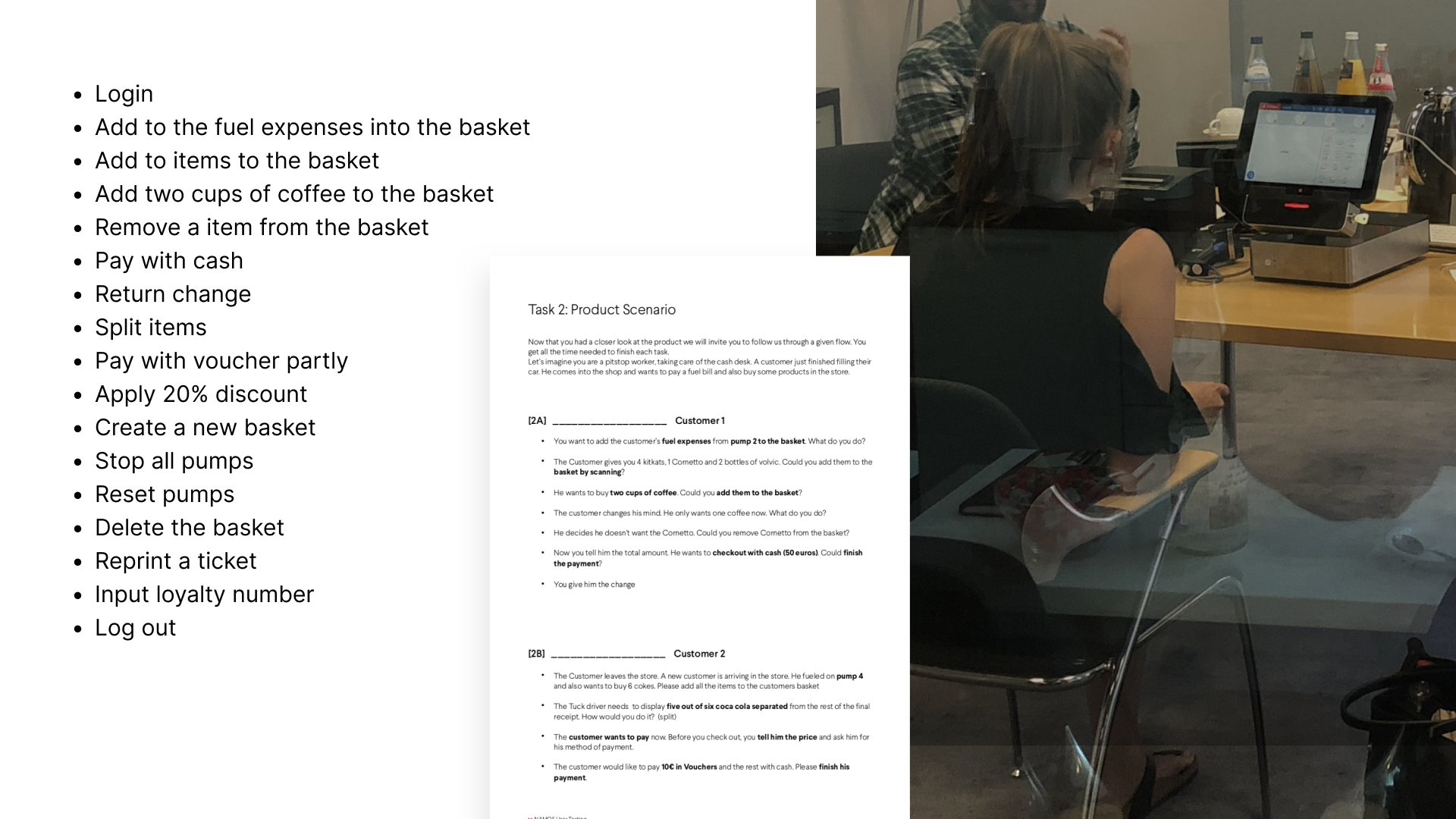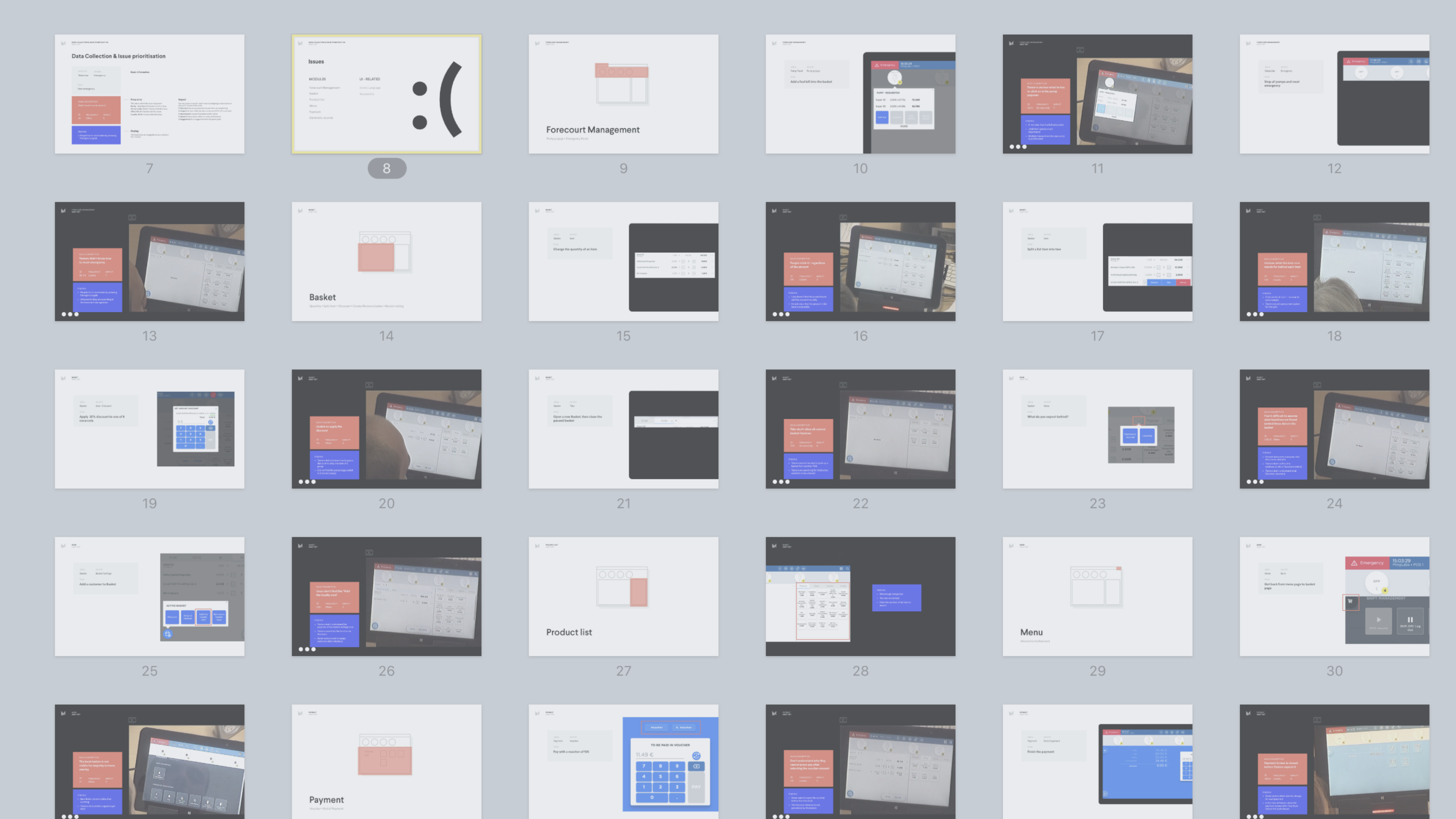Namos POS system
June 2017
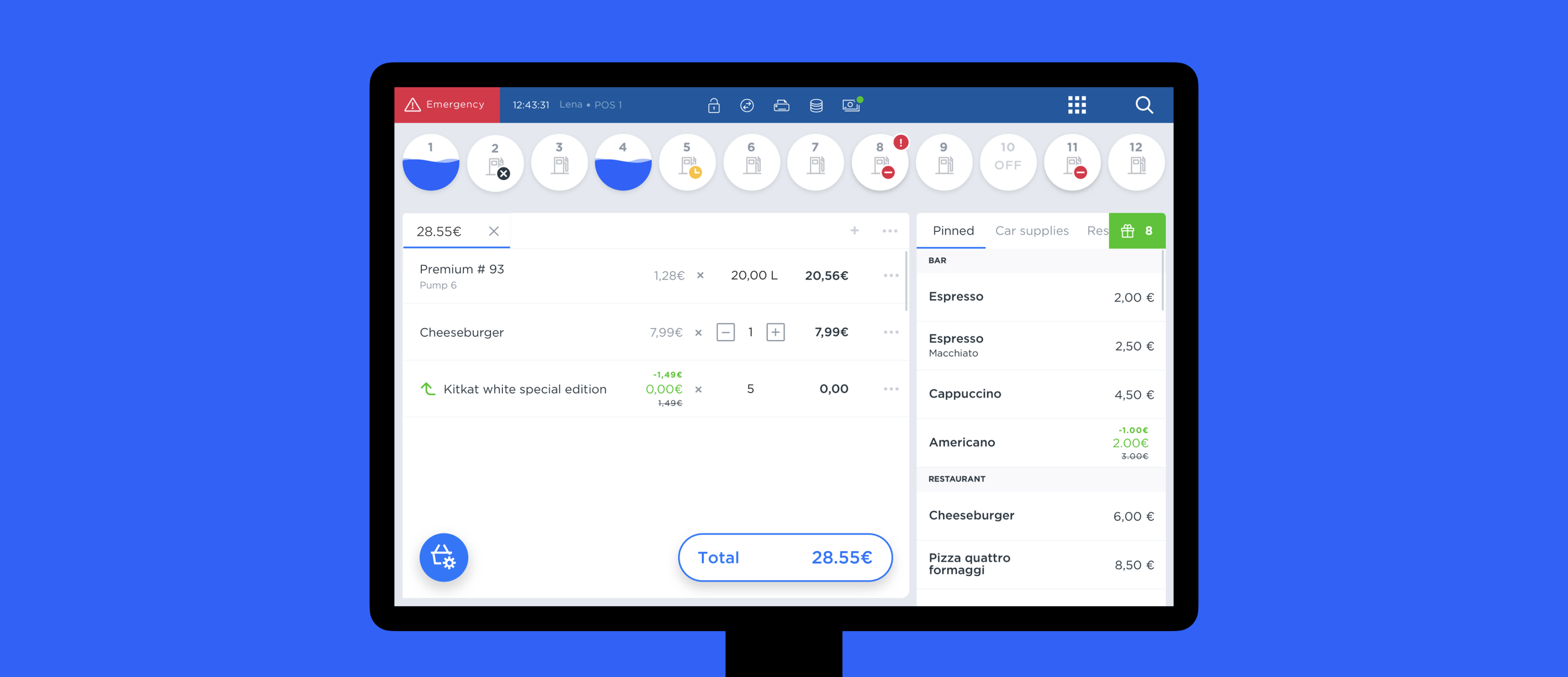
Project summary
Wincor Nixdorf, a German corporation, specializes in providing hardware, software, and services for retail and retail banking. They sought to redesign the existing 15-year-old POS system for gas stations. I collaborated with our Design lead and a product manager on this project, which spanned 10 weeks.
My role
User research, UX / UI Design, User test
Research
During the first week of the project, the Product Manager and I traveled to Hamburg for a week-long research trip. We received brief training to understand the current system operations and visited various gas stations. There, we engaged in conversations with cashiers and managers, as well as observed their usage scenarios.
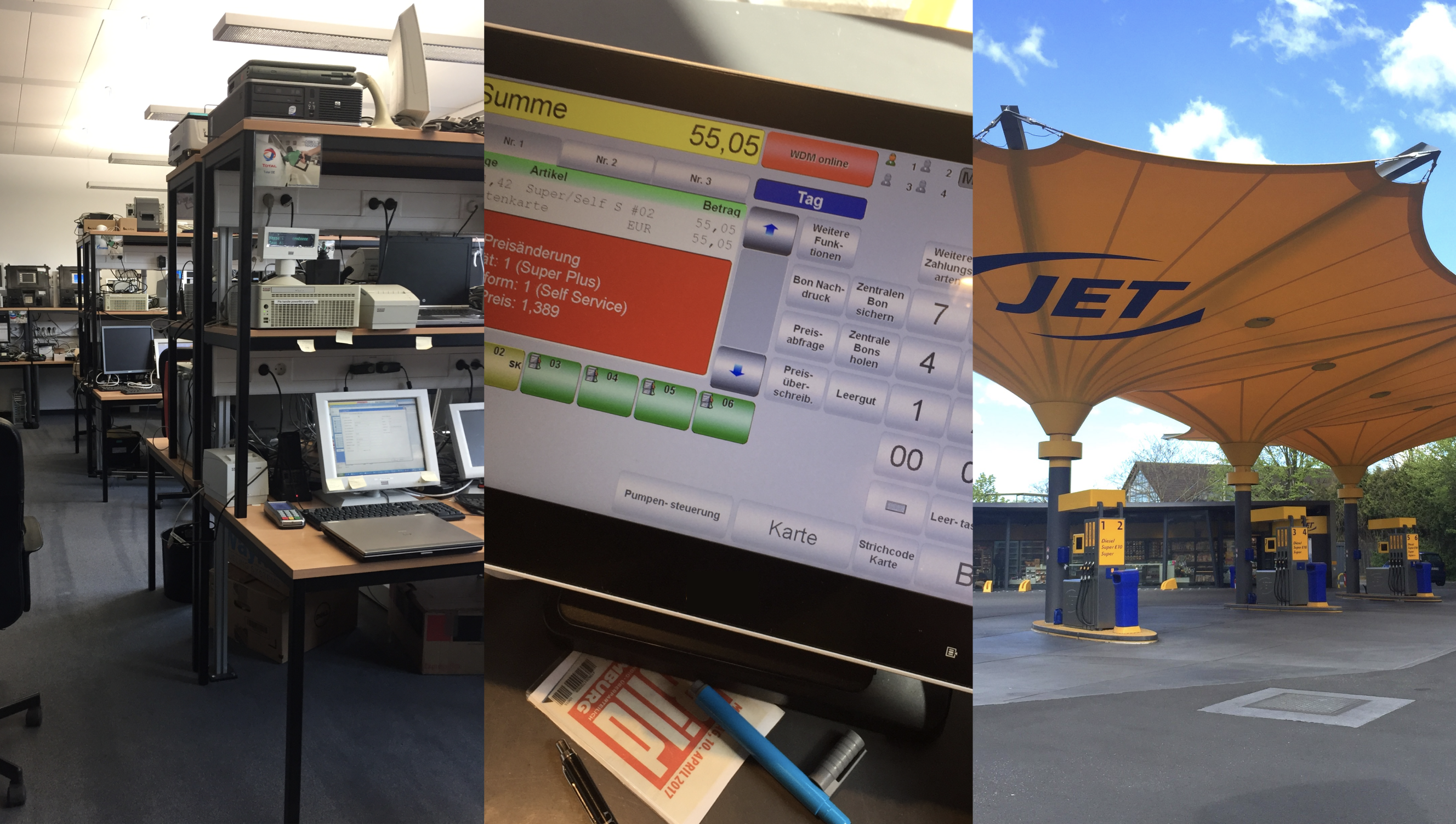
Problem statements
From the research, we found users can operate the UI of the existing POS very quickly. However, due to too many violations of general guidelines for the design of user interfaces it is hard for the user to use the POS intuitively.
Users need real-time visibility of the fueling situation outside, ensuring they are informed and can provide assistance or address issues promptly.
Users should be able to easily learn and adapt to the POS system for handling most daily tasks, while also having access to resources or support for resolving complex issues and troubleshooting problems as they arise.
Users need a streamlined process for transactions, returns, and discounts to reduce delays and enhance customer satisfaction while following store policies.
Users require the ability to log in to their personalized interface when starting their shift, allowing them to customize their system preferences and improve overall efficiency.
Users need an integrated solution for managing customer loyalty programs within the POS system, allowing them to quickly access and apply rewards, points, or discounts to transactions.
The POS system should provide better support for complex features, including on-screen tutorials and clear error messages, to help users become more proficient and confident in their use of the system.
Managers require an easy-to-use and comprehensive back-end management system within the POS, allowing them to monitor sales performance, manage staff schedules, and generate detailed reports for data-driven decision-making.
Persona & Journey
Our primary users are cashiers. To better empathize with them, we focused solely on creating personas and mapping out their main journeys, distinguishing between scenarios with and without customers.
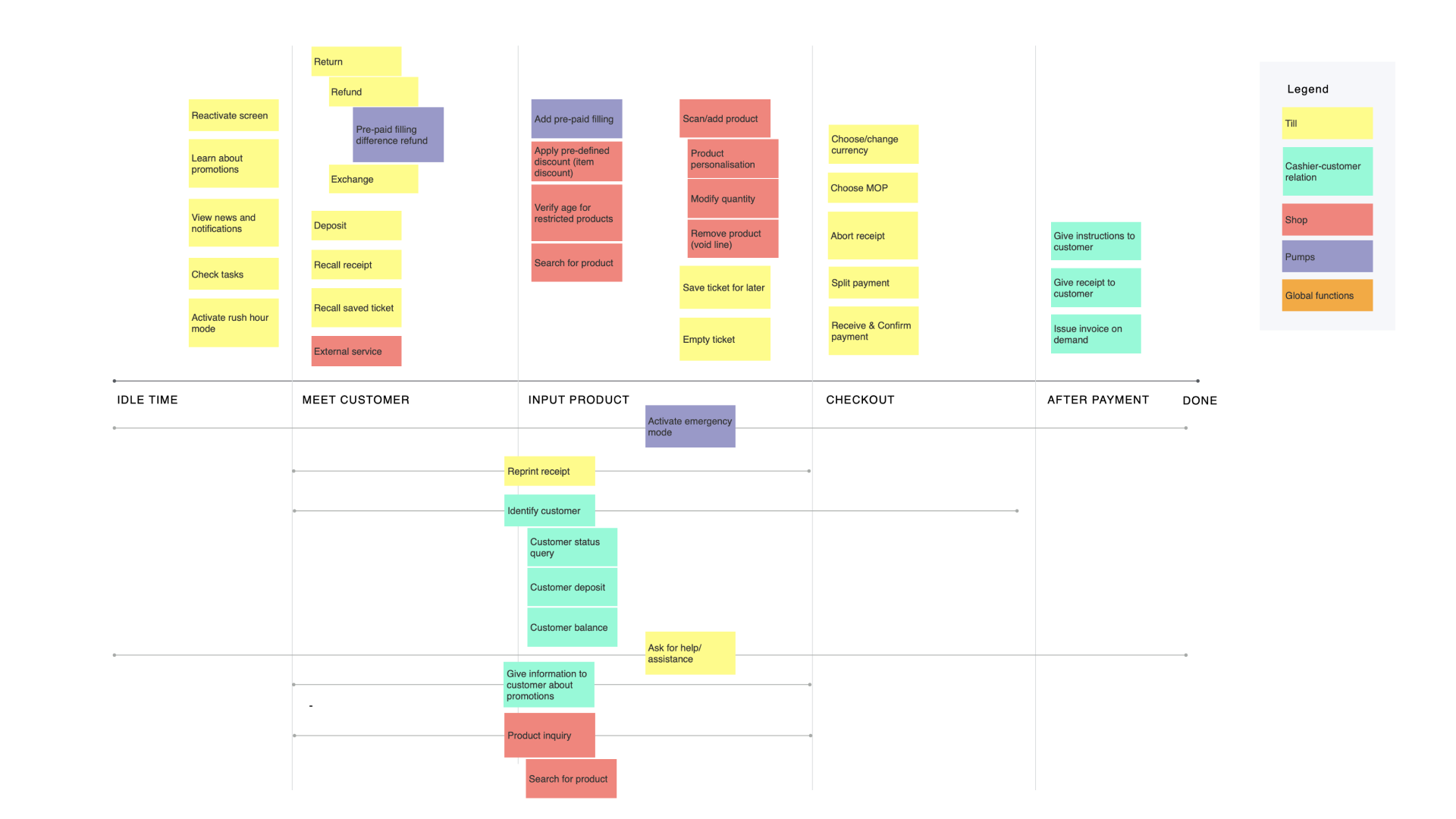
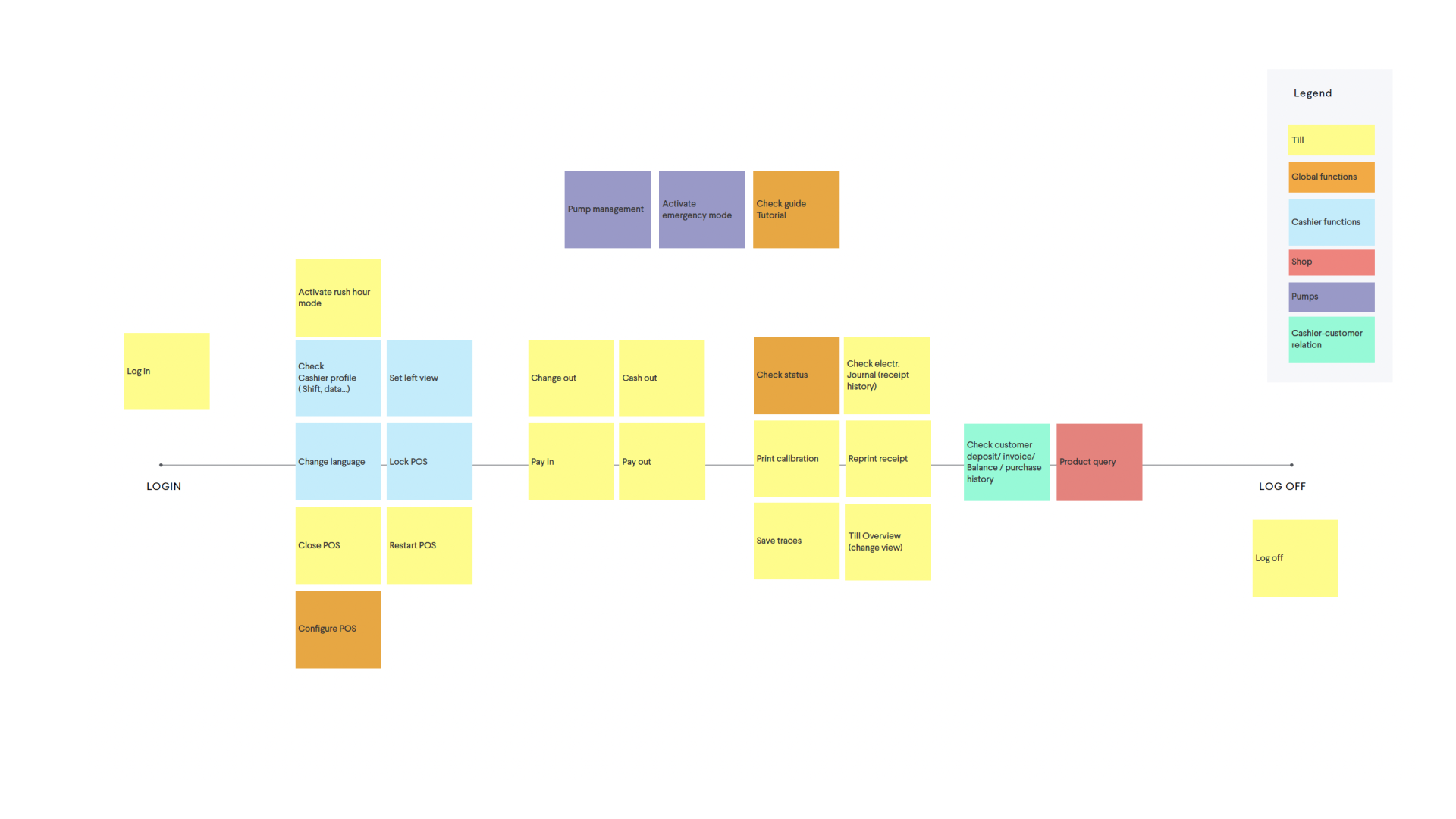

User stories
The POS system is rich in features, leading to its inherent complexity. Through collaboration with clients, we developed user stories to quickly grasp functional priorities, complementing our user research. While some features may be used infrequently, they are crucial for the MVP and are prominently featured, such as Emergency functions.
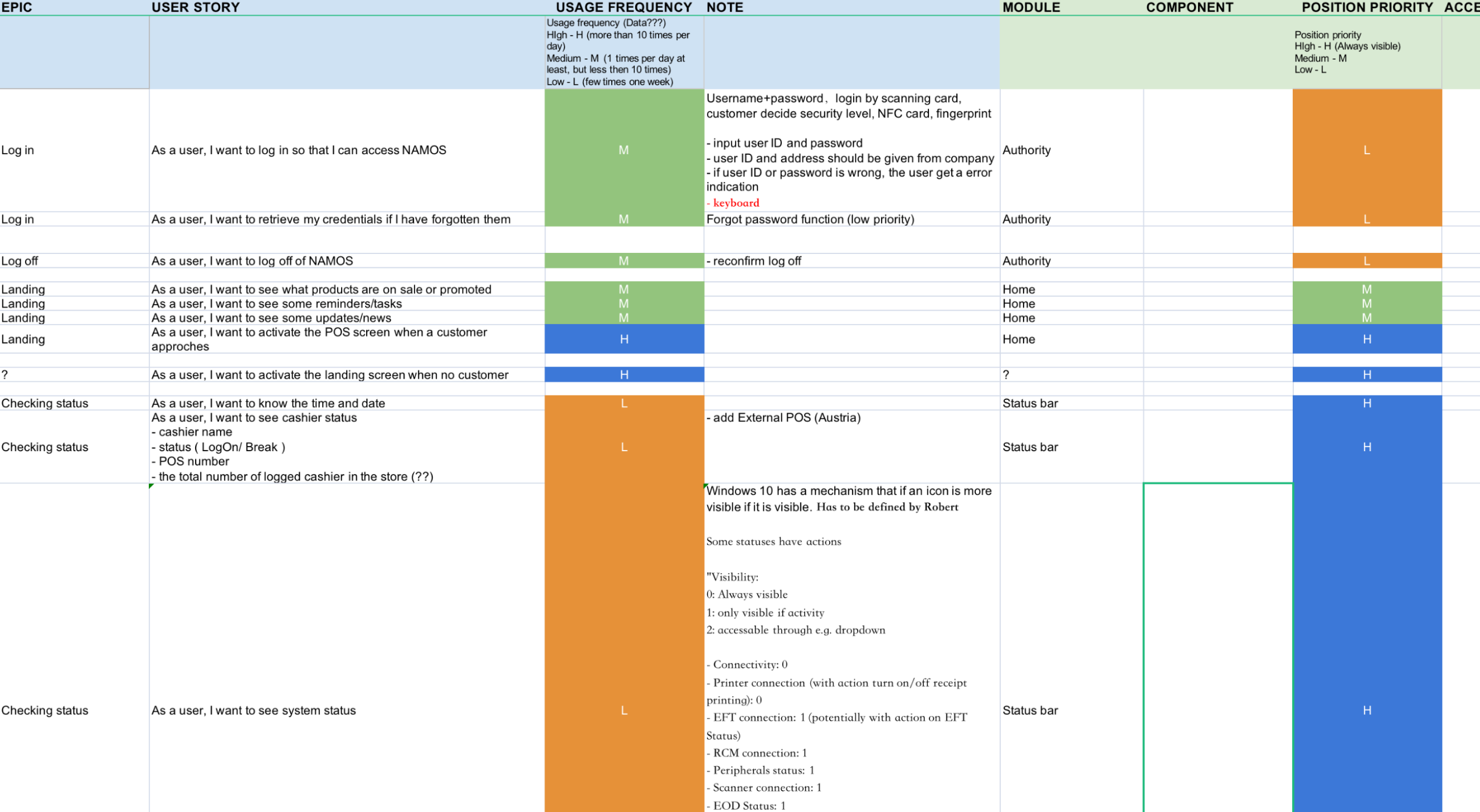
Information Architecture
From the following diagram, it's immediately apparent that in the old version, due to the continuous addition of new features, all functionalities were displayed without logical categorization, leading to clutter. In contrast, the new version features a rational classification of functions and incorporates a hierarchical structure. This allows users to easily locate desired features on the interface, rather than relying solely on memory.
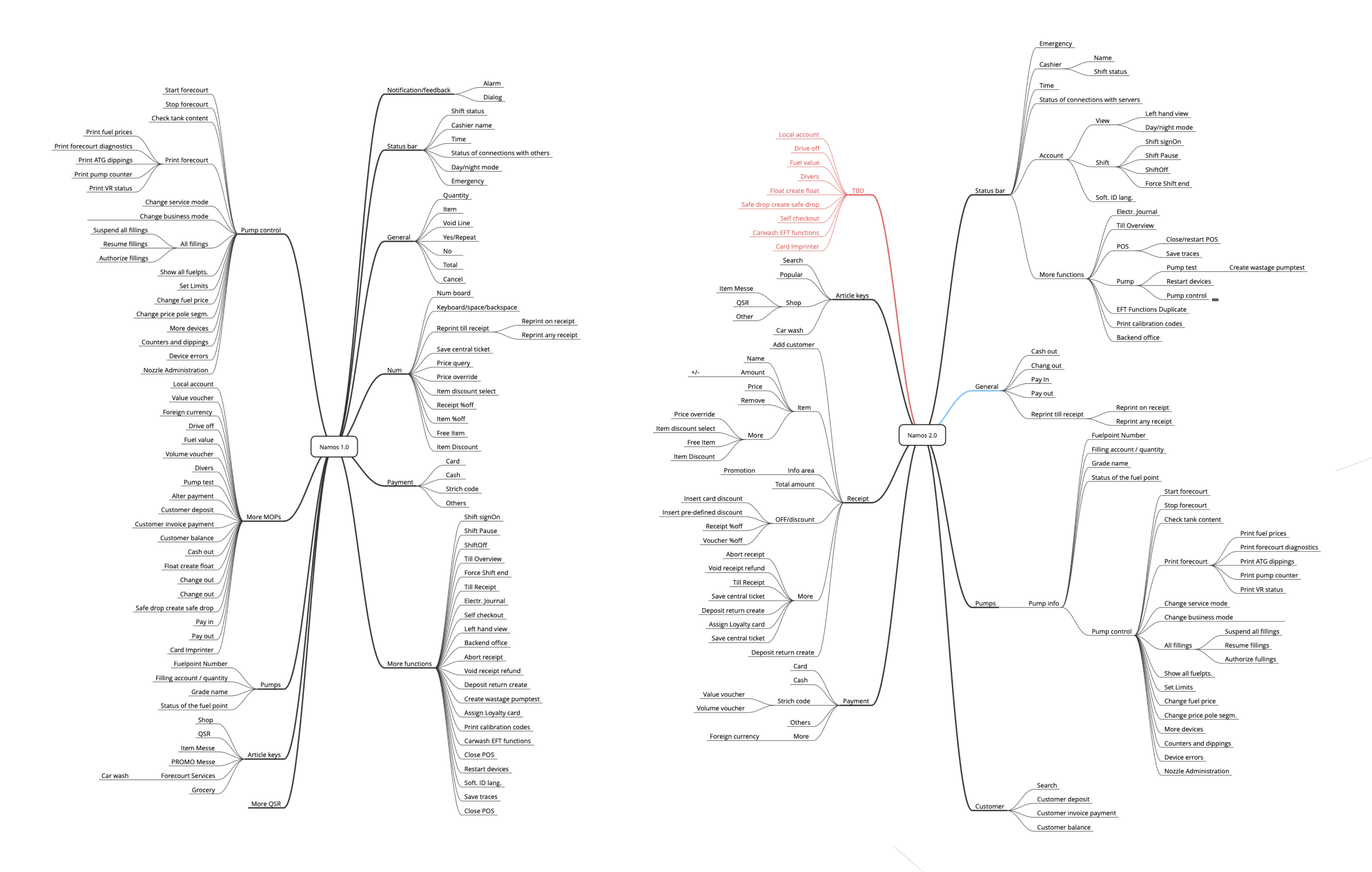
Wireframe
I rapidly created wireframes for the primary process: a customer refuels, enters the store, purchases a scannable bag of chips, a non-scannable cup of coffee, and pays with cash/card. I then revisited Hamburg with the design drafts, engaging in discussions with the client about the feasibility of the design. Together, we iterated on the first version.
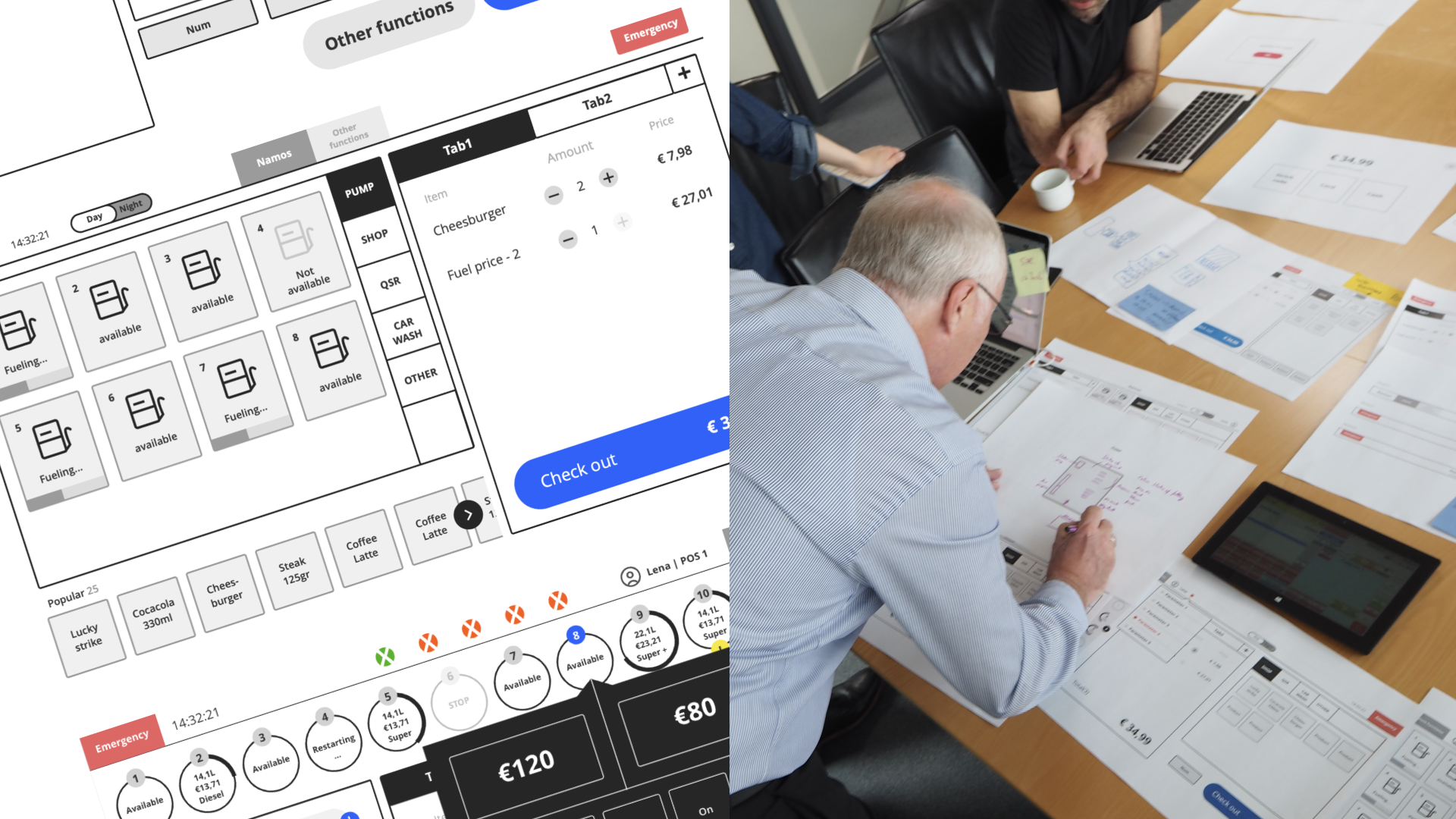
Design
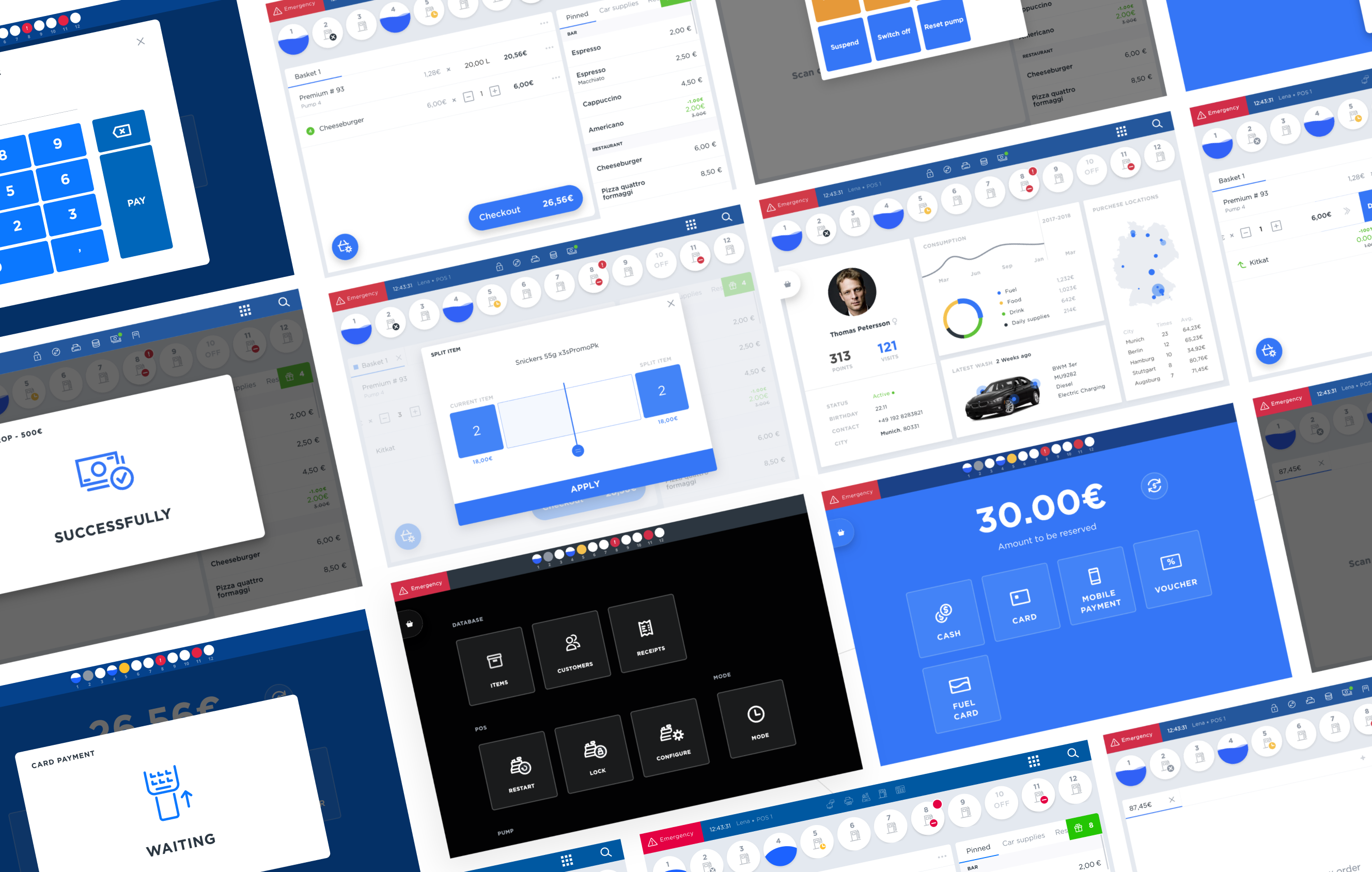
User test
We conducted testing with 12 users, who were able to complete the primary functions with almost no obstacles, without requiring any training or guidance. This is a significant improvement compared to the old version, which required 2 weeks of software training. Moreover, once users became accustomed to the main processes, their operation speed increased significantly, resulting in highly efficient workflows.
